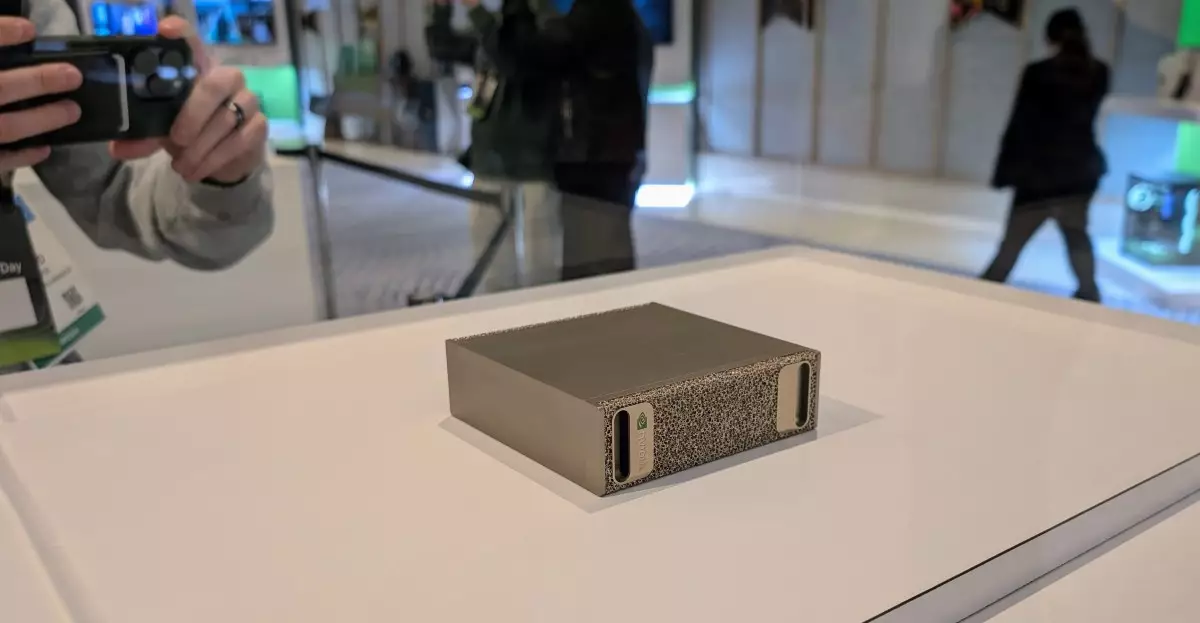In a groundbreaking trend, tech giants like Asus, Dell, and HP are now entering the supercomputing arena, harnessing Nvidia’s state-of-the-art Grace Blackwell platform. This venture represents more than just advancements in hardware; it signals a powerful shift in how we perceive artificial intelligence capabilities and their accessibility to various sectors. Nvidia’s recent showcase of personal AI supercomputers is a remarkable leap, not only demonstrating innovation in technology but also opening doors for other manufacturers to upscale their offerings. As the demand for AI-driven solutions escalates, the introduction of customizable supercomputers becomes crucial for developers, researchers, and enterprises.
Design Innovations and Market Positioning
The competition among leading manufacturers to create unique supercomputers is already unfolding. Asus is among the frontrunners with its Ascent GX10 model, a mini PC boasting impressive specs. Equipped with a formidable 1,000 AI TOPS processing power and 128GB of unified memory akin to Nvidia’s DGX Spark, Asus is aiming for that sweet spot between performance and consumer appeal. While the GX10 presents a sleek white design that transcends the traditional boxy aesthetic of conventional servers, it reflects a growing trend of prioritizing user-friendly designs that resonate with individual consumers while still being suitable for enterprise environments.
In contrast, HP’s ZGX Nano AI Station G1n takes a more premium approach, reflecting the sophistication associated with the Z2 mini workstation line. It embodies a design ethos clearly oriented toward corporate users who appreciate a polished, professional look. The possibility of integrating these mini supercomputers into server racks suggests that manufacturers are keenly aware of the needs and preferences of IT departments in organizations, making the G1n an attractive option for businesses looking to leverage AI without compromising on space or aesthetic.
Dell’s Unique Offerings
Dell is not one to be left behind in this technological race. Their “Dell Pro Max With GB10” may come off as a forgettable black box, which arguably lacks the sleek charm of its competitors. However, the device’s functionality is where it shines, marking Dell’s bold incorporation of Nvidia’s AI superchips into a refreshed hardware naming strategy. This highlights Dell’s focus on performance above design aesthetics, a choice that could resonate well with professionals who prioritize utility in their tech investments.
Furthermore, Dell anticipates showcasing its Pro Max with GB300, which promises a staggering 20 petaflops of AI performance. Such figures electrify industry analysts and enthusiasts alike, suggesting a future where computational power is exponentially available to those who need it. Just as Dell aims to have their products ready by the early summer of 2025, the anticipation surrounding AI integration into everyday applications continues to grow, hinting at the tremendous capabilities that such technology can unlock.
The Impending Competition and Market Dynamics
The anticipation of Lenovo joining this burgeoning market with its own GB10 mini-computer brings an additional layer to the unfolding story. While they have yet to disclose designs or timelines, the entry of another heavyweight indicates a market eager for competition. This atmosphere will undoubtedly drive innovation and potentially bring costs down, making high-performance AI solutions more accessible to a broader audience.
With Nvidia’s DGX Spark opening reservations and a price point of $3,000, potential buyers are left considering their options. While price is undoubtedly a significant factor, the nuanced capabilities and specifications across the various offerings transform purchasing decisions into a more complex evaluation of return on investment versus outright cost.
Implications for Industries and the Future of Supercomputing
As these powerful supercomputers become available, industries ranging from healthcare to renewable energy could experience transformative shifts. The capacity to process vast datasets efficiently and derive actionable insights could significantly enhance research and operational efficiency. With universities, corporations, and research institutions becoming increasingly reliant on machine learning and AI, the next big breakthroughs might very well emerge from these mini supercomputers.
This competitive landscape fosters not only technological evolution but also challenges that will necessitate responsibilities concerning data privacy and ethical AI use, pushing manufacturers to consider the broader implications of their innovative creations. Thus, as supercomputing becomes more personalized and accessible, it is paramount that we approach this frontier with foresight and strategic awareness, ensuring the technology serves humanity’s best interests.

